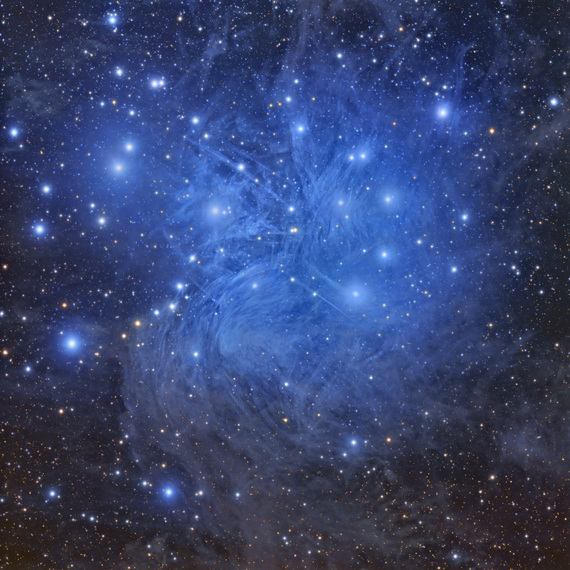You can see it with the naked eye on any winter's night. Floating high up in the sky, in the constellation Taurus, is a little dipper-shaped grouping of stars called the Pleiades or Seven Sisters, the 45th entry in Charles Messier's famous catalog of nebulous objects in the sky. Viewing the Pleiades becomes ever more amazing with a pair of binoculars or with a small telescope, which allow seeing a multitude of faint stars surrounding the brighter ones. Large backyard telescopes even reveal a splash of faint nebulosity around a couple of the stars, particularly Merope (near the center of the image), caused by light from those stars reflecting off of tiny dust grains and then making its way to us.

The Pleiades star cluster (M45) imaged by California astrophotographer Tony Hallas, with a 5-inch Takahashi TOA refractor at f/7.7, an SBIG STX-16803 CCD camera, and stacked exposures.
Credit: Tony Hallas
The Pleiades is one of the closest star clusters to us, at a distance of roughly 400 light-years. The light your eye captures from this object tonight has traveled through space since Galileo first used a telescope. Looking at such an open star cluster also reveals something of our origins, as the Sun was itself born in a group like this, a collection of stars that has been torn apart by gravity as it orbited the center of our Milky Way Galaxy.
California astroimager Tony Hallas has produced what is certainly one of the most amazing images of the Pleiades, showing the bright stars, the faint stars, and an incredible depth of bluish reflection nebulosity surrounding the young suns. It is a window into an amazing place in the universe, and one that isn't so very far away from us.